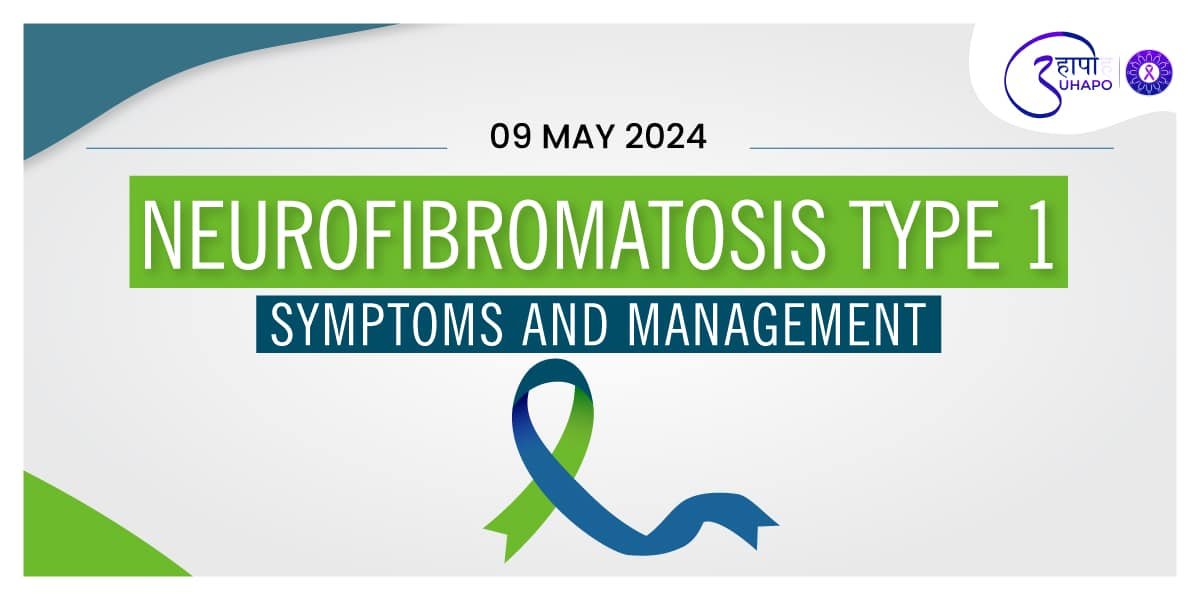Neurofibromatosis Type 1 Symptoms and Management
Neurofibromatosis Type 1 (NF1) is a genetic condition that affects the neurological system, resulting in tumors on nerve tissue. It is one of the most prevalent genetic illnesses, impacting roughly 1 in every 3,000 to 4,000 people globally. NF1 can cause a variety of symptoms, from minor to severe. In this blog post, we’ll look at the symptoms of NF1 and the management alternatives obtainable for those living with the illness.
Symptoms of Neurofibromatosis
NF1 is defined by the formation of tumors known as neurofibromas, which can grow on nerves throughout the body. These tumors may be benign, but they may lead to various symptoms depending on their size and location. Some people may have a handful of neurofibromas, while others might develop countless tumors.
One of the distinctive characteristics of NF1 is the appearance of café-au-lait spots, which are flat, brown skin patches that usually occur in childhood. These spots are typically harmless, yet they serve as an early warning sign of the illness. Other common symptoms of NF1 are –
- Neurofibromas: tumors that can appear on nerves across the body, including the skin, brain, spinal cord, and other essential organs. While most neurofibromas are not malignant, they can lead to discomfort or additional challenges if they press against the surrounding structures.
- Lisch Nodules: These are the small benign nodules that appear on the iris of the eye. They are usually asymptomatic but can be identified during a normal eye check.
- Bone Abnormalities: Some people with NF1 may have bone abnormalities such as scoliosis, bone thinning (osteoporosis), or other skeletal disorders.
- Learning challenges: NF1 can also impair cognitive development, producing challenges with learning, attention deficits, and behavioral issues in some people.
- Optic Gliomas: These are tumors that form across the optic nerve, which connects the eye with the brain. Optic gliomas can cause problems with vision, including lack of vision if they grow large enough to compress the optic nerve.
Management and Treatment
While there is no therapy for NF1, management strategies focus on symptom relief, minimizing complications, and offering supportive care to improve quality of life. Treatment strategies are adapted to each individual’s specific symptoms and medical requirements. Some significant elements of NF1 management include:
Regular monitoring – Individuals with NF1 must undergo frequent medical monitoring to track the evolution of their condition and uncover any potential consequences early on. Routine physical examinations, imaging studies, and eye exams may be used to monitor changes in tumor growth or vision.
Symptom Management – Treatment may be required to relieve specific symptoms associated with NF1. For example, pain medication or surgical intervention may be recommended to address neurofibromas that cause discomfort or function.
Educational Support: Children with NF1 who have learning obstacles or behavioral disorders may benefit from educational support services such as special education programs or behavioral therapy, which can help them thrive academically and socially.
Genetic Counselling: Individuals with NF1 as well as their relatives should seek genetic counseling to address the condition’s inheritance pattern and the danger of passing it down to subsequent generations. This can help families make more informed choices about family planning and pregnancy testing.
Clinical trials: Researchers continually search for novel treatments for NF1 through research investigations. Participating in these trials may provide access to investigational medicines with the potential to improve outcomes for people with NF1.
Conclusion
Neurofibromatosis Type 1 is a complex genetic disease that can impact multiple systems in the body, causing a variety of symptoms and problems. While there is no treatment for NF1, proactive management measures can help people live more full lives by managing symptoms, monitoring for consequences, and providing the appropriate support and care. We can enhance outcomes and quality of life for those living with NF1 by raising awareness of the condition and funding research.
Get in Touch with Us
If you or your loved one are facing any challenges and health concerns, you can get in touch with Uhapo Health Services for assistance with navigation, awareness, and advocacy.
You can Contact us via –
- Phone: +91-9137-44-1392
- Email: info@uhapo.co.in
- Website: https://www.uhapo.co.in/
Feel free to reach out to us for support, guidance, and information regarding your health-related queries and concerns. Uhapo Health Services here to help you every step of the way!


3 Replies to “Neurofibromatosis Type 1- Symptoms and Management”
July 5, 2025
August 3, 2025
August 26, 2025